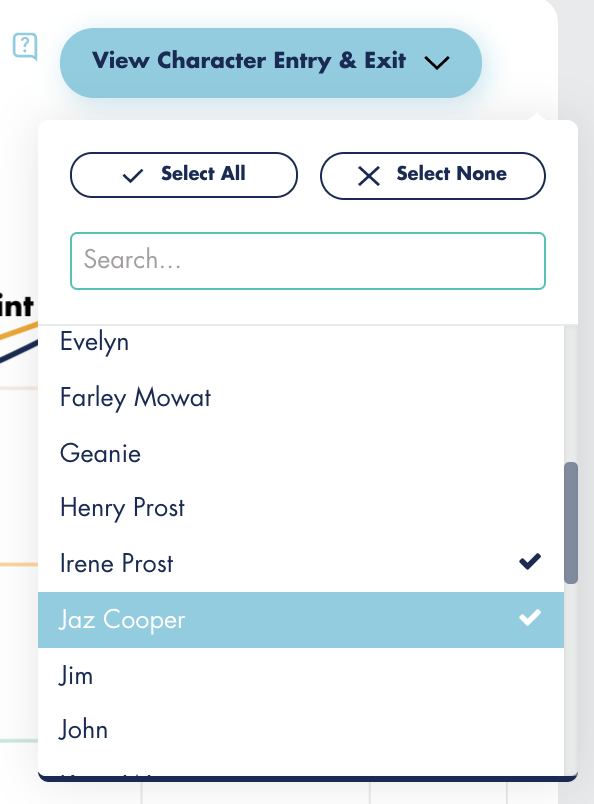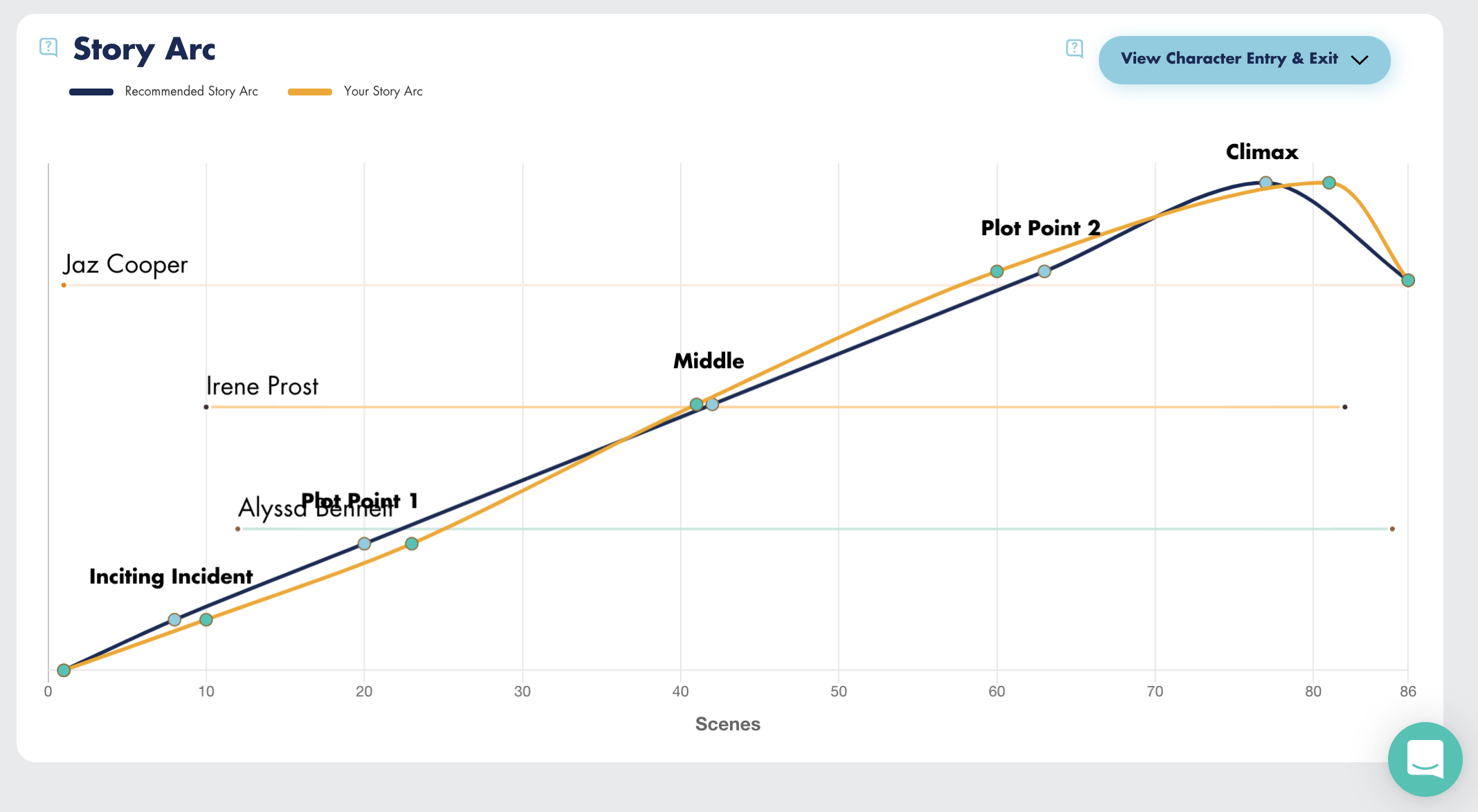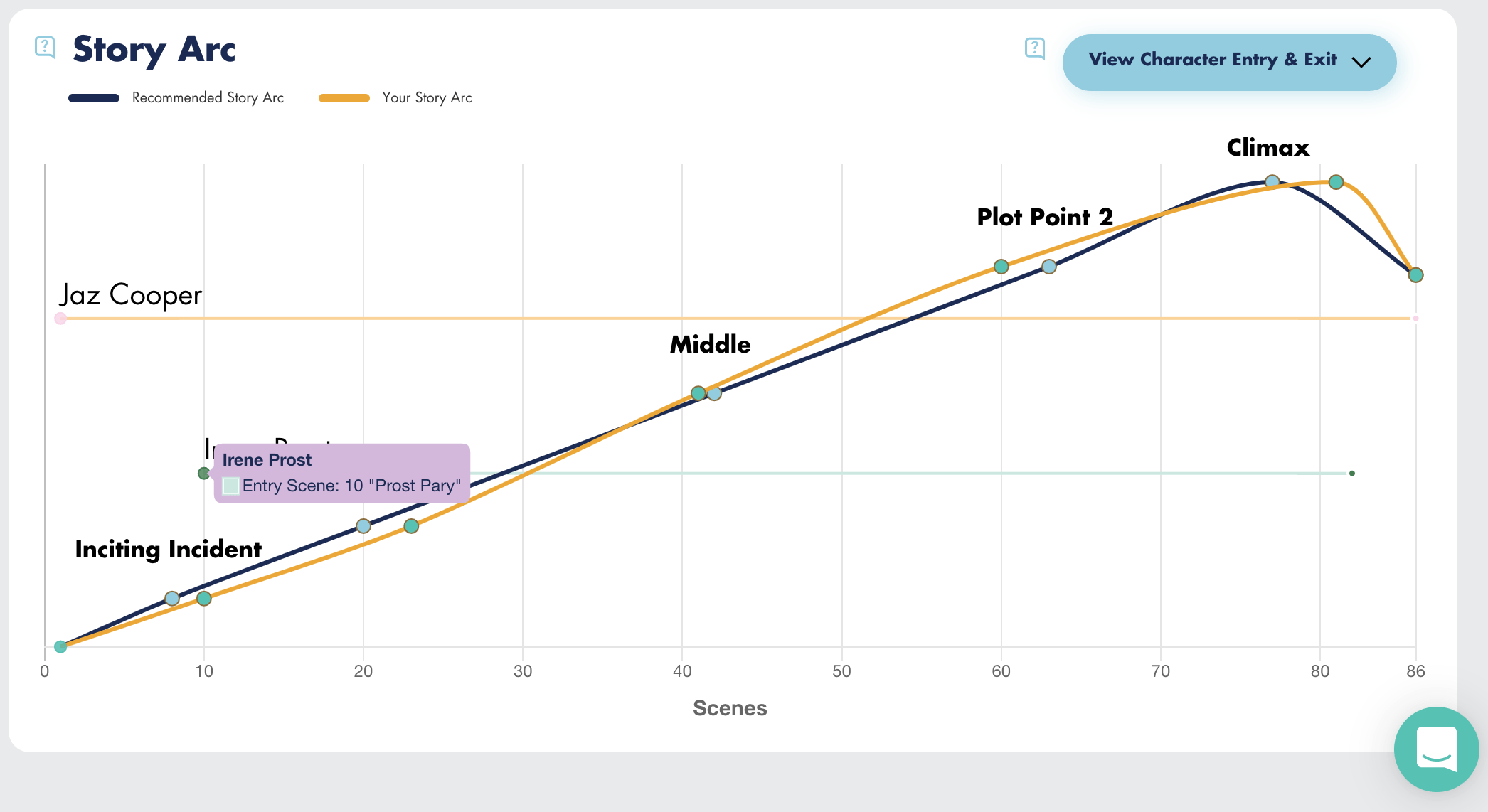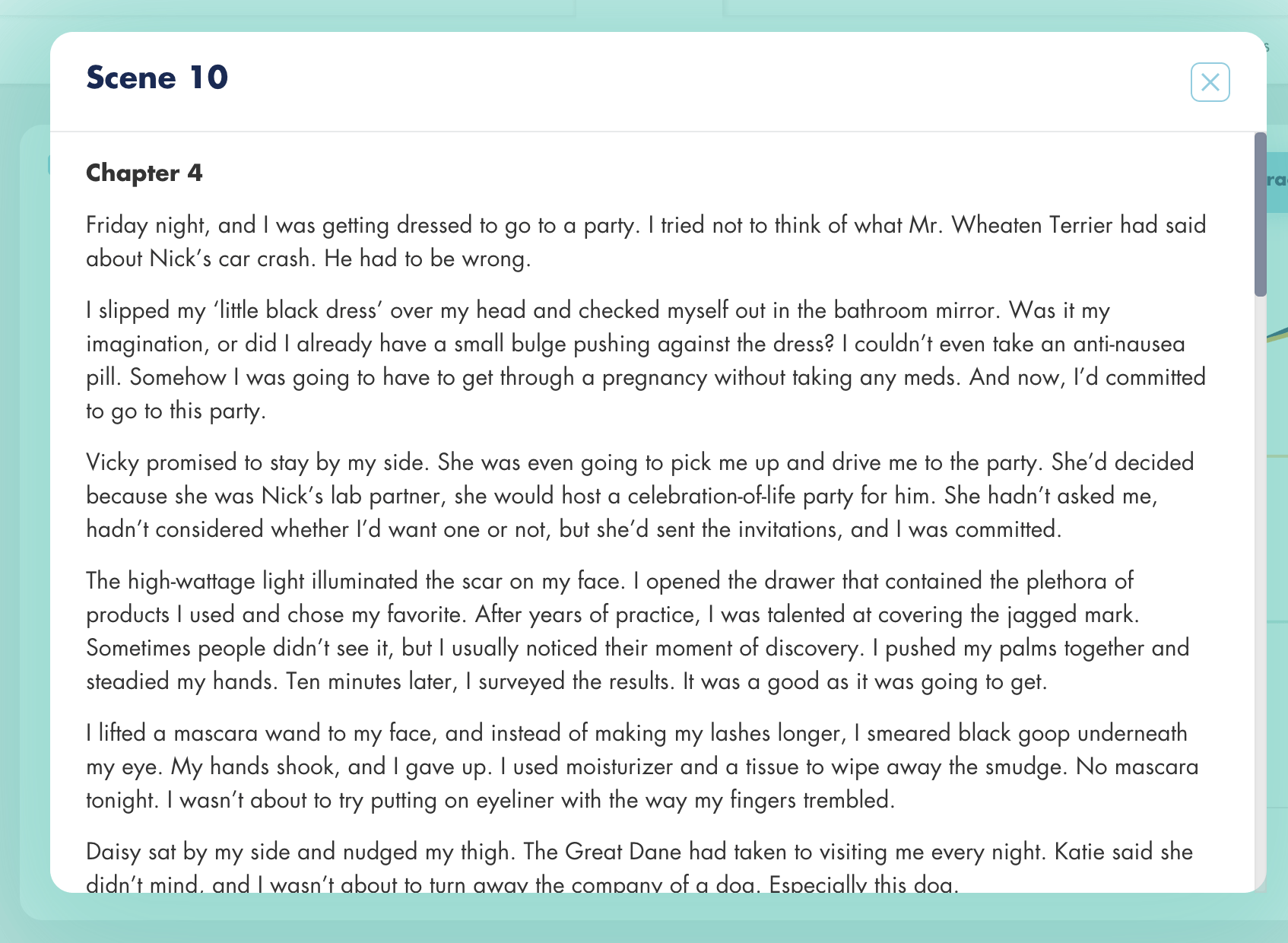Character Arc
How a character changes and grows (or not) throughout the story.
A character’s arc includes when she enters and exits the story.
The first time a character appears, she must be introduced to the reader. This is where you decide how much time you spend on describing her and who she is in the story.
- For a major character, put more emphasis on introducing the character.
- For a minor character, write as little as possible and still keep the reader engaged and not confused.
You control how the information of a new character is presented. Consider her appearance, how she speaks, what her mannerisms are, her actions, and how she interacts with other characters.
When describing a character for the first time, describe the character so the reader:
- Can conjure up a physical image of the character.
- Understands the POV character’s interpretation of the new character.
The last scene for a character is the end of the character story arc.
Consider whose eyes the new character is being seen from and make the description something that character would think or feel.
For example, a rough and tumble character might look at a banker from a city and sneer at the manicured fingernails, whereas a pedicurist might look at the same character and be impressed with the care the person takes in her appearance.
Only include details that move the story forward. If a character’s length of time in his job is important then include that detail.
A character who has been a private detective for one day will act differently than a character who has been a private detective for ten years. If the job is not relevant to the story, then consider not including the detail when introducing the character.
After the character’s final scene, she may still have an impact on other characters in the novel, but she won’t grow or change again. Hence, it’s the end of her character arc.
Fictionary StoryTeller Helps You Create Character Arcs
When viewing the Story Arc in StoryTewller, you select characters to overlay on the Story Arc.
This shows you which scene a character enters the story and which is her final scene.
Use StoryTeller to check that you’ve introduced your protagonist early. Don’t wait too long or you will confuse the reader.
Conflict will drive your story. Without an antagonist, there won’t be enough conflict. If Fictionary shows your antagonist enters late, then in a rewrite consider having that character enter the story earlier.
To check the protagonist and antagonist both enter the story early, select their names in the drop-down menu on the Story Arc. The conflict ends when the antagonist leaves the story, so make sure both the protagonist and antagonist are in the climax scene.
Here’s an example from my WIP, Evolution. I’ve selected four characters from the View Character Entry & Exit drop-down menu.

I’ve selected Irene, Jaz,, and Alyssa. The insight below shows the characters overlaid on the Story Arc.

Now I want to know what scene Irene is first in. To do this, I hover over her name. The first scene Irene appears in is Scene 10 called “Prost Party.”

If the scene name is not enough information for me to know what that scene is about, I click the character name and read the scene.

Since Scene 10 is the first time Irene Prost appears in the novel, I can read through the scene and decide if I’ve added the appropriate amount of description to the scene. This gives me a chance to rewrite the scene if I’ve got this wrong.
Learn more about writing captivating stories.
If you’d like to listen to an in-depth discussion on story editing, check out Story Edit Like A Pro.

StoryTeller is creative editing software for fiction writers. Transform your story, not just your words. Successful stories depend on your ability to edit, improve, and revise your work. Only when you master story editing, can you master storytelling.
StoryTeller draws a recommended story arc and draws the story arc for your story. You can see how to improve the structure of your story within seconds.
Why not check out Fictionary’s StoryTeller free 7-day trial and tell powerful stories?

